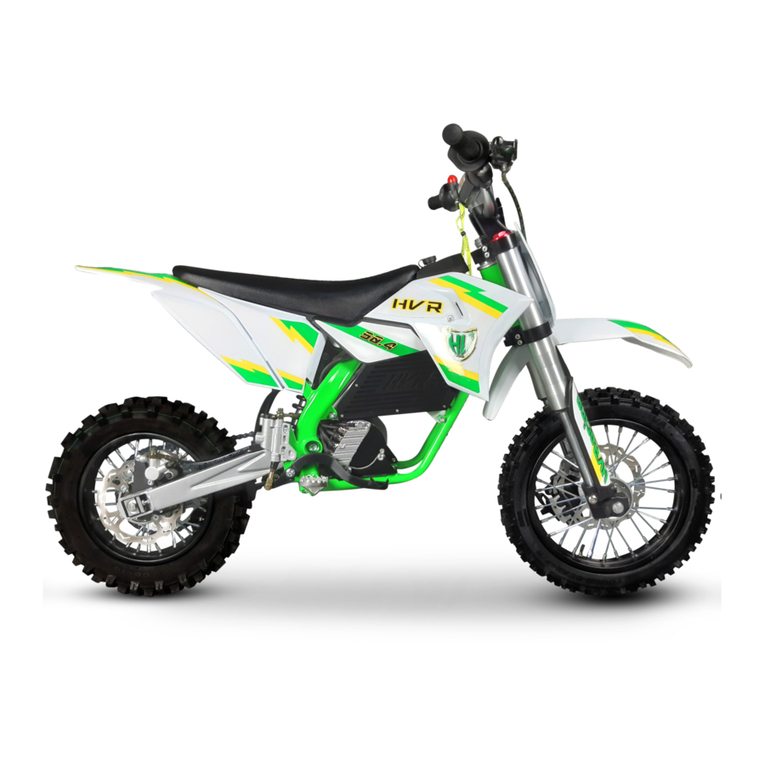
2. SAFETY NOTICE
WARNING:
Read these operating instructions carefully before putting the HVR into operation!
To ensure safe and long operation, please note the following:
- Your child must be mentally and physically able to ride a motorcycle
- The minimum age is 6 years
- Riding a bicycle is the basic requirement for riding a motorcycle
- Explain to your child how to handle the motorcycle and discuss this with your child so that it is safe to use he understands with the
motorcycle
- Rotating parts such as chains, sprockets, wheels etc. pose a risk of injury to fingers and other body parts, so it is essential to keep a
safe distance from them during operation
- Never let your child ride the motorcycle unattended
- Your child must always wear appropriate protective clothing (motorcycle helmet, protectors, motorcycle boots, gloves, etc.)
- The safety equipment must always be in proper condition
- Be a good role model and always wear protective clothing when riding a motorcycle
- Explain to your child the riding technique and the controls of the motorcycle
- Make sure you have the correct power and speed setting that suits your child's riding ability and check this setting
- The motorcycle may only be charged by an adult, as is the inspection before every ride and maintenance
- The charging process must be supervised by an adult
- Don't push your child to drive beyond their abilities
- In order to take part in races, your child must have the necessary experience and be in a physical and mental state
- The pull cord of the safety switch m ows are worn on the left arm while driving in order to switch off the motorcycle in the event of a fall
- The maximum driver weight is 50kg for the HVR 50.4 and 70kg for the HVR 60.4, each including full driver equipment!
- Attend a training course at a motorsport club with experienced trainers
- The brake system can get very hot while driving; do not touch it until after a long cooling phase
- When not in use, pull off the tear-off switch to protect against unauthorized use
Page 5 of 36 HVR instruction manual




























